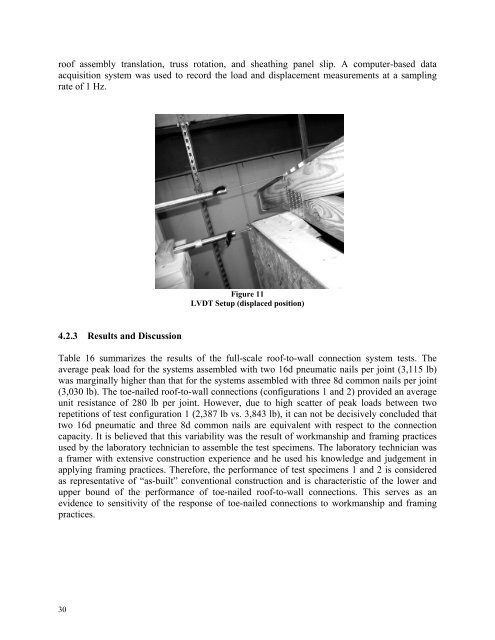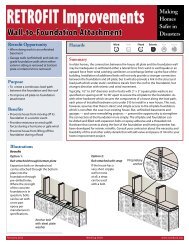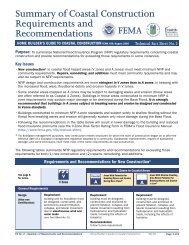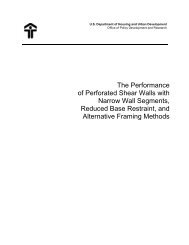roof framing connections in conventional residential construction
roof framing connections in conventional residential construction
roof framing connections in conventional residential construction
You also want an ePaper? Increase the reach of your titles
YUMPU automatically turns print PDFs into web optimized ePapers that Google loves.
oof assembly translation, truss rotation, and sheath<strong>in</strong>g panel slip. A computer-based dataacquisition system was used to record the load and displacement measurements at a sampl<strong>in</strong>grate of 1 Hz.Figure 11LVDT Setup (displaced position)4.2.3 Results and DiscussionTable 16 summarizes the results of the full-scale <strong>roof</strong>-to-wall connection system tests. Theaverage peak load for the systems assembled with two 16d pneumatic nails per jo<strong>in</strong>t (3,115 lb)was marg<strong>in</strong>ally higher than that for the systems assembled with three 8d common nails per jo<strong>in</strong>t(3,030 lb). The toe-nailed <strong>roof</strong>-to-wall <strong>connections</strong> (configurations 1 and 2) provided an averageunit resistance of 280 lb per jo<strong>in</strong>t. However, due to high scatter of peak loads between tworepetitions of test configuration 1 (2,387 lb vs. 3,843 lb), it can not be decisively concluded thattwo 16d pneumatic and three 8d common nails are equivalent with respect to the connectioncapacity. It is believed that this variability was the result of workmanship and <strong>fram<strong>in</strong>g</strong> practicesused by the laboratory technician to assemble the test specimens. The laboratory technician wasa framer with extensive <strong>construction</strong> experience and he used his knowledge and judgement <strong>in</strong>apply<strong>in</strong>g <strong>fram<strong>in</strong>g</strong> practices. Therefore, the performance of test specimens 1 and 2 is consideredas representative of “as-built” <strong>conventional</strong> <strong>construction</strong> and is characteristic of the lower andupper bound of the performance of toe-nailed <strong>roof</strong>-to-wall <strong>connections</strong>. This serves as anevidence to sensitivity of the response of toe-nailed <strong>connections</strong> to workmanship and <strong>fram<strong>in</strong>g</strong>practices.30
















